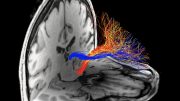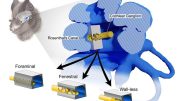
Recent research showcases a novel method for increasing the purity of dopamine cells derived from genetically engineered stem cells, offering significant potential in treating Parkinson’s disease. This method not only promises reduced recovery times and lower risk of relapse for patients but also aims to decrease dependency on medication.
The future treatment of Parkinson’s Disease has undergone tremendous development in recent years. Now, a breakthrough in research has emerged, delivering the strongest results for both side-effect-free and long-lasting treatment effects.
Recent research published on December 5 in the journal Nature Communications, titled “Enhanced production of mesencephalic dopaminergic neurons from lineage-restricted human undifferentiated stem cells,” reveals significant advancements in treating Parkinson’s disease.
Breakthrough in Parkinson’s Disease Research
In the new research findings, DANDRITE group leader and Associate Professor Mark Denham has developed a method that ensures much higher purity of the so-called dopamine cells, which are crucial in connection with Parkinson’s disease.
“Stem cells offer promising potential for treating Parkinson’s disease by transforming into specific nerve cells. However, the precision of this transformation poses a significant challenge with current methods, resulting in low purity,” Mark explains.
Achieving high purity is critical for effectively restoring movement in patients.
Innovative Approach in the Denham Lab
In the Denham Lab, stem cells were genetically engineered to prevent them from generating the incorrect types of nerve cells. The newly engineered stem cells have an enhanced ability to produce the specific nerve cells required for Parkinson’s treatment known as the dopaminergic cells.
Furthermore, the researchers show that the genetically engineered stem cells led to the restoration of movement in animal models. This breakthrough is a potential new therapeutic approach for treating Parkinson’s disease patients.
Implications for Treatment and Future Research
Experiments on rats have shown that both the quantity and purity of cultured stem cells are critical for the number and duration of treatments.
“Using our genetically engineered cells we generate a higher purity of dopamine cells, for patients this will reduce the recovery time and diminish the risk of relapse and medication use. My goal is to help patients stay off their medication, which requires high purity. So, my next step is to transfer my method to clinical trials,” Marks states.
Reference: “Enhanced production of mesencephalic dopaminergic neurons from lineage-restricted human undifferentiated stem cells” by Muyesier Maimaitili, Muwan Chen, Fabia Febbraro, Ekin Ucuncu, Rachel Kelly, Jonathan Christos Niclis, Josefine Rågård Christiansen, Noëmie Mermet-Joret, Dragos Niculescu, Johanne Lauritsen, Angelo Iannielli, Ida H. Klæstrup, Uffe Birk Jensen, Per Qvist, Sadegh Nabavi, Vania Broccoli, Anders Nykjær, Marina Romero-Ramos and Mark Denham, 5 December 2023, Nature Communications.
DOI: 10.1038/s41467-023-43471-0









In the United States this will produce a viable treatment in 10 to 40 years. So hopefully we can find more progressive countries that put this treatment into efficacy within a handful of years. The US is just too sluggish to generate innovative progress that helps people in a timely fashion.